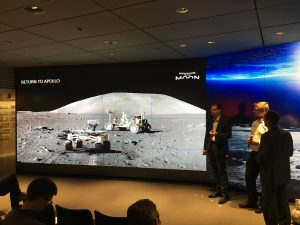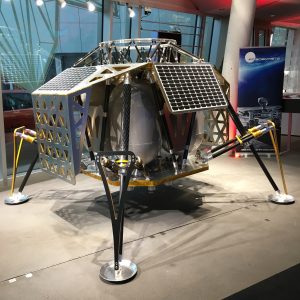
Berlin-based ‘new space’ company, the PTScientists are set to mark the 45th anniversary of humanity’s final footprints on the Moon, by revisiting the historic landing site of Apollo 17. Having successfully negotiated a launch contract with Spaceflight Industries, Inc, the PTScientists’ ‘Mission to the Moon’ is a big step closer to its goal of becoming the first private mission to our lunar neighbour.
“It’s the last piece of the puzzle,” says PTScientists’ CEO Robert Bohme. “We have been busy designing and testing our rovers, developing our transport and landing spacecraft, and now we have secured our ride to space”.
The PTScientists have chosen a landing site in the Taurus-Littrow valley; the last place humans set foot on the Moon. They hope to get a closer look at how NASA’s Moon buggy has survived the inhospitable conditions of the Moon. During their 1972 mission, Apollo 17 Moonwalkers Gene Cernan and Harrison Schmitt used NASA’s Lunar Roving Vehicle to explore the local terrain – it has since sat untouched on the surface of the Moon for almost 45 years, providing a unique opportunity to study how materials survive in space. PTScientists are delighted to have the support of these two iconic astronauts, which comes with one caveat: Cernan has said the team is not allowed beat the lunar speed record he set while on the Moon!
Working with technology partner Audi, the PTScientists have developed lightweight solar-powered rovers that are packed full of technology to collect scientific data and video on the Moon. The Audi Lunar Quattro boasts four-wheel drive and active suspension, which will help the team when conducting experiments and navigating the surface of the Moon.

The PTScientists will be using a commercial launch vehicle to blast their vehicles into space, and then their Autonomous Landing and Navigation Module – ALINA – will safely deliver the rovers to the Moon.
ALINA is capable of transporting up to 100 kg of payload to the Moon, which is enough to carry the pair of Audi Lunar Quattros and still have room for additional scientific and commercial payloads.
The team already has agreements to deliver international payloads for Sweden, Canada and the USA and continues to market this opportunity for partnership.
The PTScientists have come a long way in since 2008, when the team was first founded. Back then, they were juggling careers spanning cyber-security to designing dentist tools by day, and developing their Moon mission, but now it’s a full-time job for all of them. “If we succeed, we will have done something that previously only governments have been able to do” says Bohme. “We want our mission to inspire others to follow their dreams. You never know what is possible until you try”.
Original published at: http://spacewatchme.com/2016/11/german-scientists-take-one-giant-leap-towards-moon/
 SpaceWatch.Global An independent perspective on space
SpaceWatch.Global An independent perspective on space

